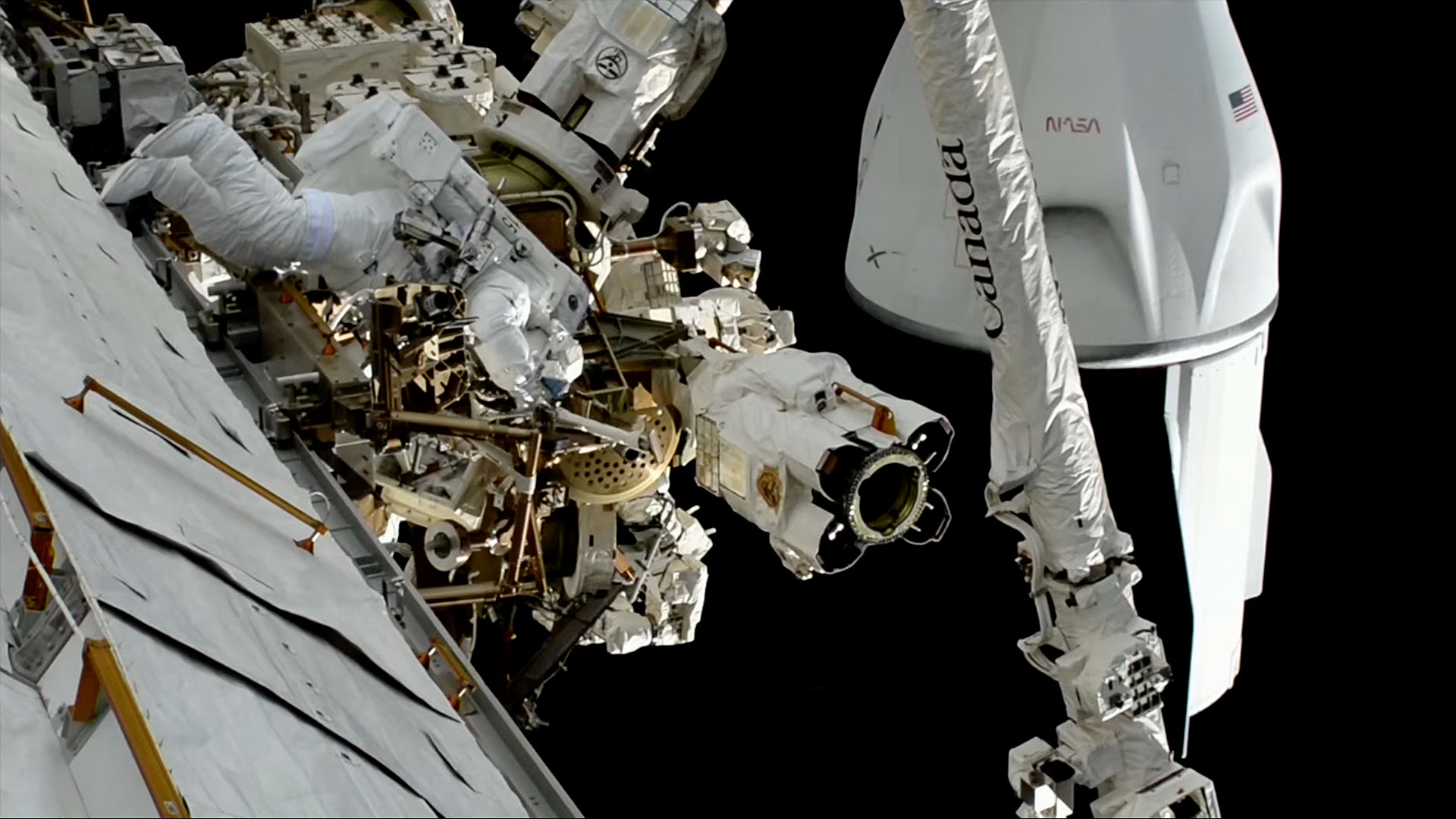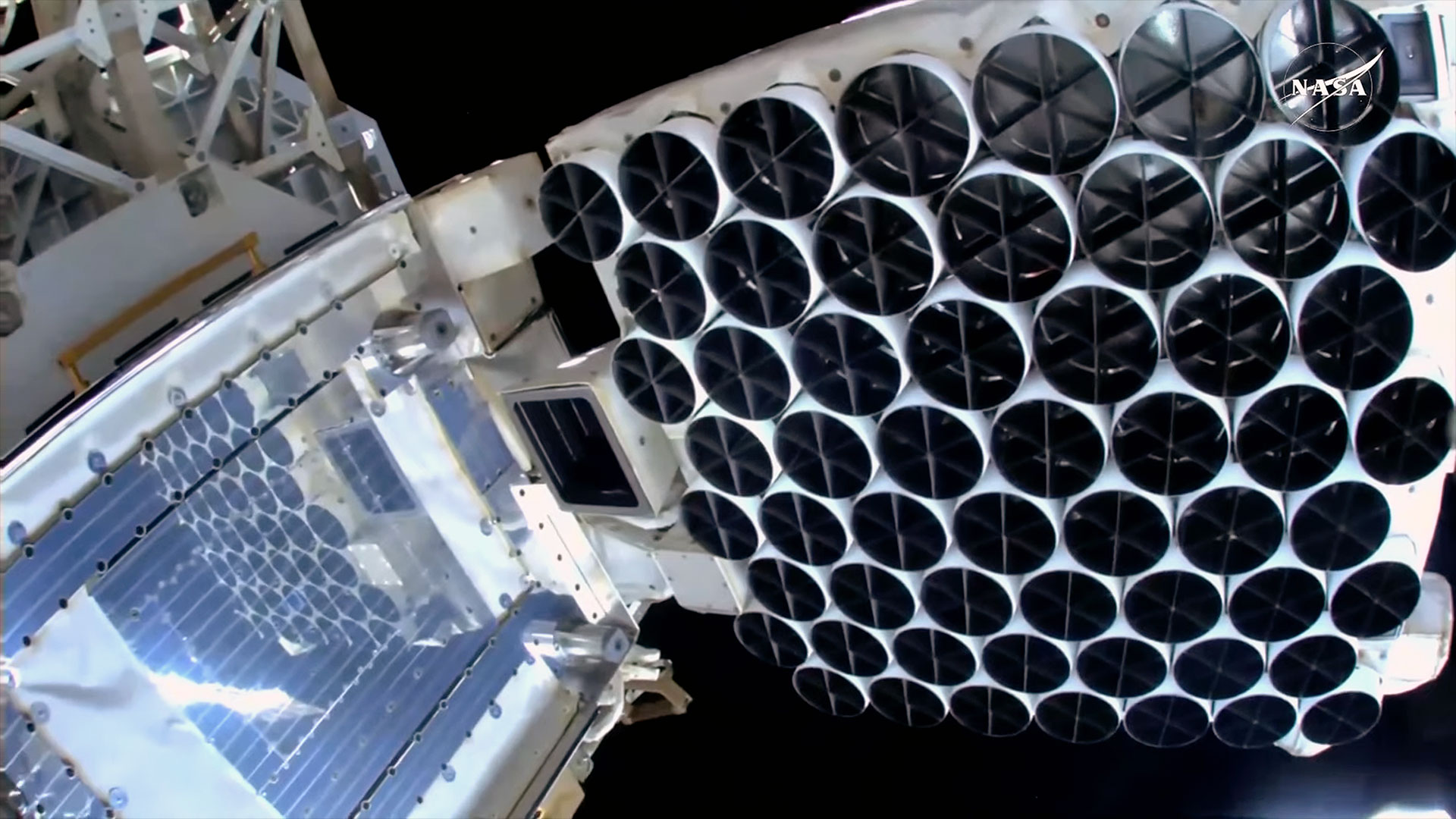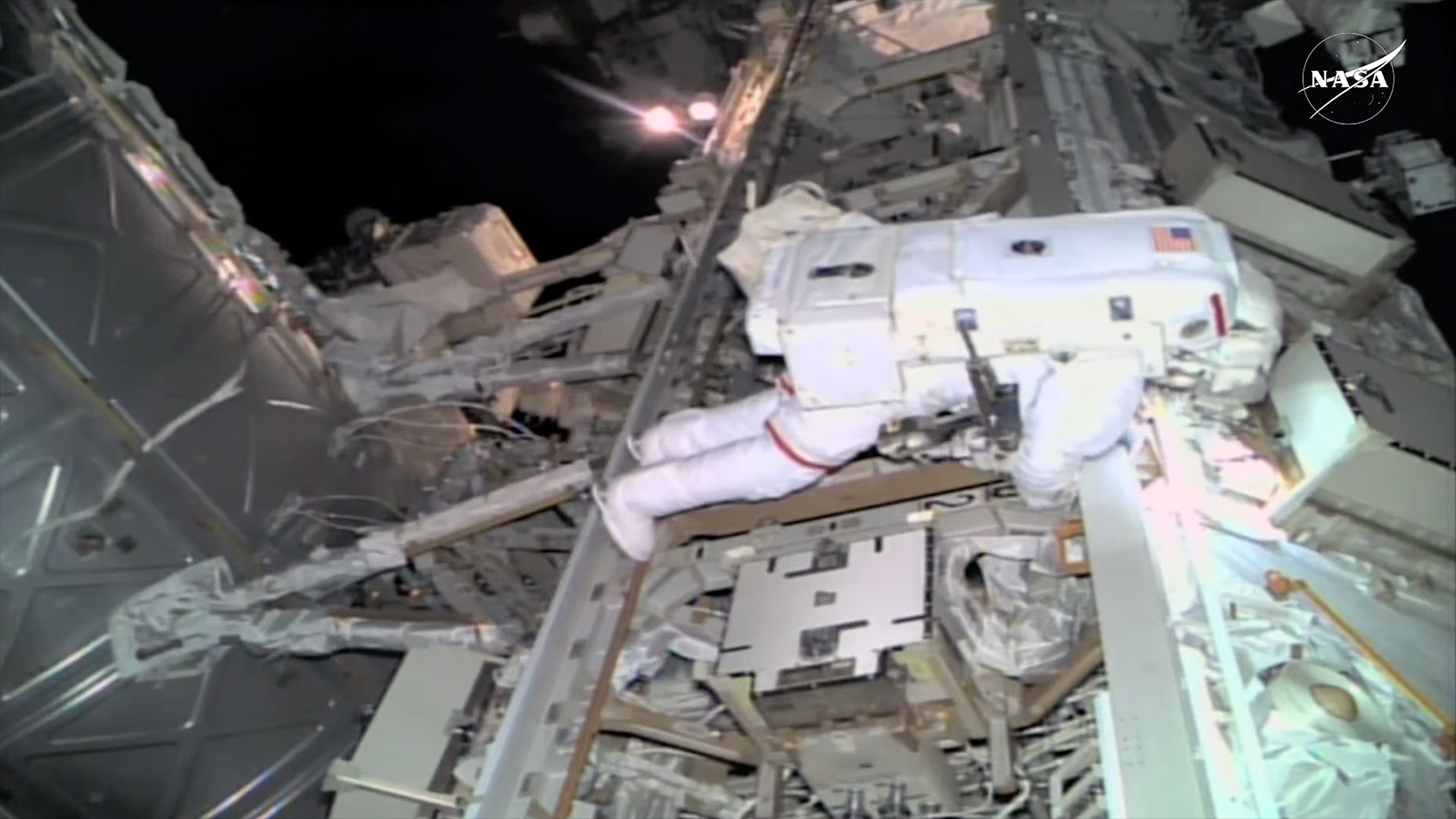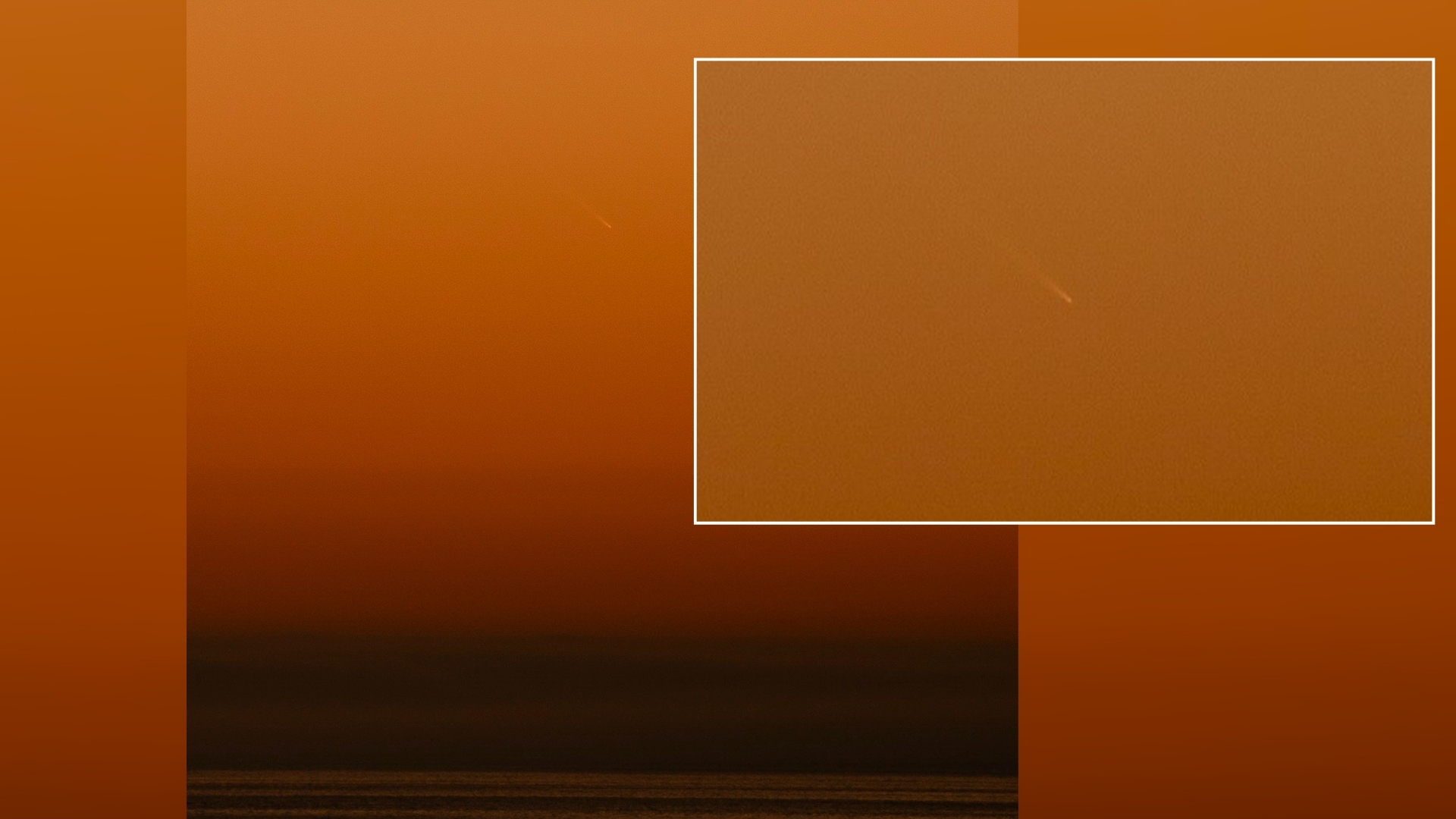An X-ray observatory used to study neutron stars is “back in the black” and a cosmic ray detector is ready for possible future upgrades after two astronauts completed a spacewalk outside the International Space Station (ISS).
Nick Hague worked to repair the Neutron star Interior Composition Explorer, or NICER, mounted to the outside of the space station, before he and Expedition 72 commander Suni Williams inspected the Alpha Magnetic Spectrometer (AMS) during a six-hour EVA (extravehicular activity) on Thursday (Jan. 16).
Hague and Williams began the spacewalk at 8:01 a.m. EST (1301 GMT) and made quick work of their first and primary task: to replace a rate gyro assembly that helps maintain the station’s orientation. Working near and within the complex’s backbone truss, the two astronauts used power tools to unmount the faulty unit and secure the new one in its place.
From there, they divided their attention, with Hague heading to work on NICER while Williams focused on replacing a reflector used by spacecraft when approaching a docking with the space station. That task brought Williams to the Harmony module and international docking adapter, just beside her and Hague’s ride home in March, SpaceX’s Crew Dragon spacecraft “Freedom.”
Related: Spacewalks: How they work and major milestones
Hague, meanwhile, used prefabricated patches to cover areas where optical light was seeping into the NICER observatory. First noticed in May 2023, the leak in one or more of the instrument’s light-blocking filters had a significant impact on NICER’s operations and data. With the patches now in place, NICER is expected to resume its X-ray observations of deep space phenomena.
Hague and Williams then came together to work on a different astrophysics instrument. The pair inspected access areas and connector tools that may be used to perform maintenance work on the AMS on future spacewalks.
Installed during the penultimate flight of the space shuttle in May 2011, the AMS is a particle physics experiment designed to measure antimatter in cosmic rays in the pursuit of learning more about mysterious dark matter. Although not originally planned to be serviced, the AMS has received repairs on past spacewalks, and the inspections performed by Hague and Williams may pave the way to more work, including possibly installing a new radiator.
With all of their planned tasks complete and time to spare, Hague evaluated the condition of an articulating portable foot restraint and Williams photographed the insulation on an ammonia coolant line before both returned to the airlock to end their spacewalk at 2:01 p.m. EST (1901 GMT).
“We’re about two months short of the 60th anniversary of the first spacewalk, and it’s just really cool to be part of that legacy and do our little bit,” said Hague just before the end of the EVA.
Thursday’s spacewalk was the 91st U.S. EVA using the Quest airlock and the 237th in total supporting the assembly, maintenance and upgrade of the International Space Station since 1998.
It was the second spacewalk during Expedition 72 and the first successful American EVA in more than a year. Two previous attempts at exiting the space station in 2024 were met with equipment and spacesuit issues that prevented any tasks from being completed.
Hague has now performed four spacewalks, logging a total of 25 hours and 56 minutes. Williams has conducted eight EVAs, spending 56 hours and 40 minutes working outside the space station.
Williams, together with Butch Wilmore, are scheduled to perform the next spacewalk on Jan. 23. The two will remove a radio frequency group antenna assembly from the station’s truss; collect samples of surface material for analysis to see whether microorganisms may exist on the exterior of the orbital complex; and prepare a spare elbow joint for the Canadarm2 robotic arm in the event it is needed for replacement.







